Nissan Interstar vs Renault Kangoo – Differences & prices compared
Compare performance, boot space, consumption and price in one view.
Find out now: which car is the better choice for you – Nissan Interstar or Renault Kangoo?
The Nissan Interstar (Cargo Van) comes with a Diesel or Electric engine and Manuel or Automatic transmission. In comparison, the Renault Kangoo (High Roof Estate) features a Diesel, Petrol or Electric engine with Manuel or Automatic transmission.
When it comes to boot capacity, the Nissan Interstar offers , while the Renault Kangoo provides 950 L – depending on how much space you need. If you’re looking for more power, decide whether the 170 HP of the Nissan Interstar or the 130 HP of the Renault Kangoo suits your needs better.
In terms of consumption, the values are 7.40 L per 100 km for the Nissan Interstar, and 20.20 kWh5.20 L for the Renault Kangoo.
Price-wise, the Nissan Interstar starts at 34900 £, while the Renault Kangoo is available from 23100 £. Compare all the details and find out which model fits your lifestyle best!
Nissan Interstar
The Nissan Interstar is a versatile van that expertly combines practicality with modern design. It offers a spacious interior that caters to both cargo and passenger needs, making it ideal for businesses and families alike. With its robust performance and efficient fuel consumption, the Interstar stands out as a reliable choice in the commercial vehicle market.
detailsRenault Kangoo
The Renault Kangoo high-roof van delivers a practical and versatile solution for both family and commercial use, with its spacious interior and adaptable seating arrangements. Its modern design and user-friendly features provide comfort and convenience, making it an appealing option for those needing a reliable workhorse. Additionally, the efficient engine options ensure a balanced approach to performance, keeping running costs manageable for everyday driving.
details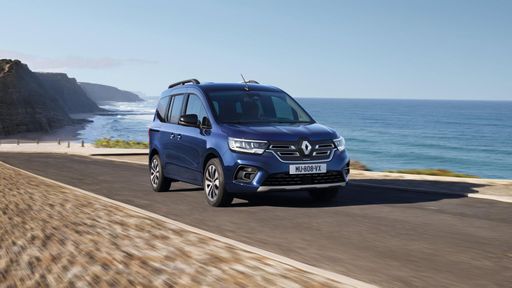 @ Renault
@ Renault
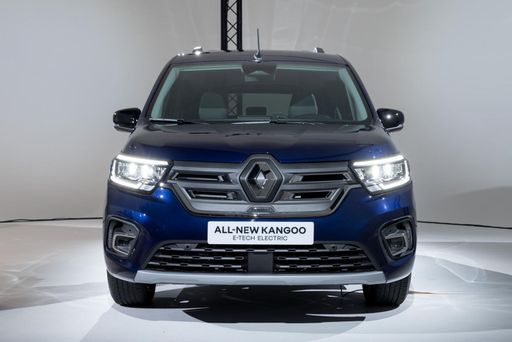 @ Renault
@ Renault
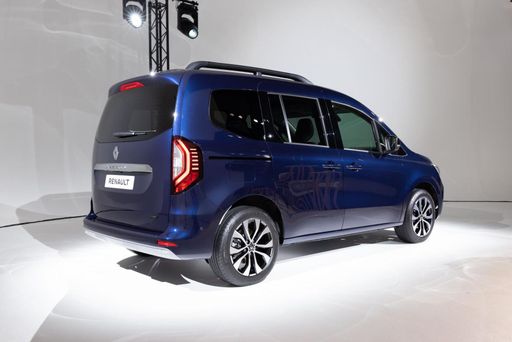 @ Renault
@ Renault
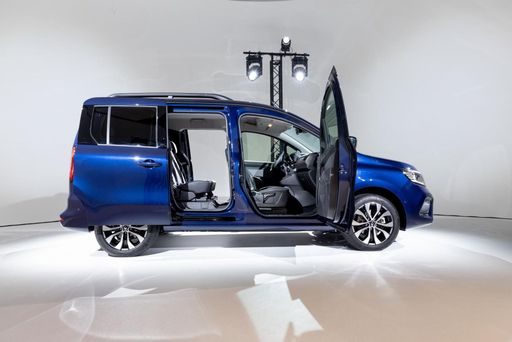 @ Renault
@ Renault
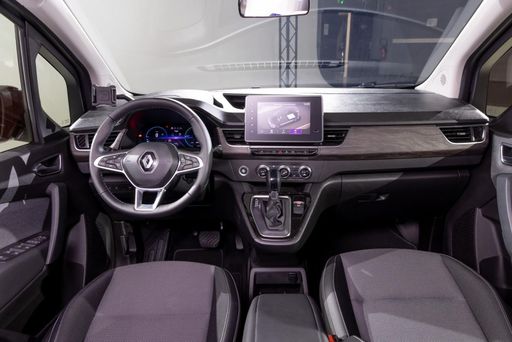 @ Renault
@ Renault
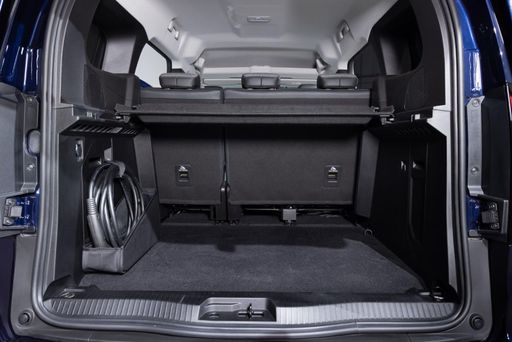 @ Renault
@ Renault

|
|
|
|
|
Costs and Consumption |
|
|---|---|
|
Price
34900 - 55600 £
|
Price
23100 - 36200 £
|
|
Consumption L/100km
7.4 - 7.5 L
|
Consumption L/100km
5.2 - 7.1 L
|
|
Consumption kWh/100km
-
|
Consumption kWh/100km
20.2 - 21.5 kWh
|
|
Electric Range
175 - 410 km
|
Electric Range
278 - 285 km
|
|
Battery Capacity
-
|
Battery Capacity
-
|
|
co2
0 - 195 g/km
|
co2
0 - 161 g/km
|
|
Fuel tank capacity
80 L
|
Fuel tank capacity
54 L
|
Dimensions and Body |
|
|---|---|
|
Body Type
Cargo Van
|
Body Type
High Roof Estate
|
|
Seats
3 - 7
|
Seats
5 - 7
|
|
Doors
4
|
Doors
5
|
|
Curb weight
2053 - 2535 kg
|
Curb weight
1585 - 2041 kg
|
|
Trunk capacity
-
|
Trunk capacity
500 - 950 L
|
|
Length
5680 - 6315 mm
|
Length
4486 - 4911 mm
|
|
Width
2080 mm
|
Width
1860 - 1919 mm
|
|
Height
2498 - 2756 mm
|
Height
1838 - 1869 mm
|
|
Payload
965 - 1447 kg
|
Payload
400 - 609 kg
|
Engine and Performance |
|
|---|---|
|
Engine Type
Diesel, Electric
|
Engine Type
Diesel, Petrol, Electric
|
|
Transmission
Manuel, Automatic
|
Transmission
Manuel, Automatic
|
|
Transmission Detail
Manual Gearbox, Automatic Gearbox, Reduction Gearbox
|
Transmission Detail
Manual Gearbox, Dual-Clutch Automatic
|
|
Drive Type
Front-Wheel Drive
|
Drive Type
Front-Wheel Drive
|
|
Power HP
105 - 170 HP
|
Power HP
95 - 130 HP
|
|
Acceleration 0-100km/h
-
|
Acceleration 0-100km/h
11.6 - 15.6 s
|
|
Max Speed
115 - 177 km/h
|
Max Speed
130 - 184 km/h
|
|
Torque
300 - 380 Nm
|
Torque
200 - 270 Nm
|
|
Number of Cylinders
4
|
Number of Cylinders
4
|
|
Power kW
77 - 125 kW
|
Power kW
70 - 96 kW
|
|
Engine capacity
1997 cm3
|
Engine capacity
1332 - 1461 cm3
|
General |
|
|---|---|
|
Model Year
2024 - 2025
|
Model Year
2022 - 2024
|
|
CO2 Efficiency Class
G, A
|
CO2 Efficiency Class
E, F, D, A
|
|
Brand
Nissan
|
Brand
Renault
|
Nissan Interstar
The Evolution of the Nissan Interstar
The Nissan Interstar has long been a staple in the commercial vehicle sector, known for its robust build and practical design. The latest iterations have further cemented its status with a range of technical enhancements and innovative features aimed at aiding businesses in achieving optimal efficiency. Whether you're navigating city streets or traversing the highways, the Interstar stands out as a reliable workhorse ready to meet various transport needs.
Power and Performance
The current range of Nissan Interstar models boasts diesel engines ranging from 105 to 180 PS, offering a commendable blend of power and fuel efficiency across the board. With a fuel consumption of between 7.4 and 7.5 litres per 100 kilometres, these vehicles are designed to minimise operational costs while maximizing performance.
All models feature four-cylinder engines, with engine displacement between 1997 and 2299 cm³, capable of producing torque figures between 330 and 400 Nm. These specifications ensure that the Interstar offers superior pulling power, which is particularly useful for transporting heavy loads across different terrains.
Transmission and Drive Options
Versatility is at the heart of the Nissan Interstar, with transmission options including both manual and automatic gearboxes. Drivers can also choose between front-wheel and rear-wheel drive configurations, allowing the vehicle to suit specific logistical requirements or personal preferences.
For those seeking simplicity and ease of use in urban environments, the Interstar with its automated gearshift provides a smooth driving experience, reducing driver fatigue and increasing focus on the road ahead.
Dimensions and Load Capacities
The Nissan Interstar is available in various lengths, from 5048 mm to an extensive 6848 mm, catering to diverse commercial needs. With widths ranging from 2070 mm to 2222 mm and heights from 2307 mm to 2808 mm, the Interstar offers multiple configurations to maximise cargo space and accommodate various loads.
With a maximum payload capacity of up to 1451 kg, businesses can rest assured that the Interstar is more than capable of delivering goods efficiently without compromising on safety or comfort.
Innovation and Technological Features
While functionality remains a priority, Nissan has not skimped on technological advancements. Among the innovations included are advanced safety features, such as anti-lock braking systems (ABS), electronic stability control (ESC), and a variety of sensors to assist with parking and reversing.
In terms of driver comfort, the brand offers multiple trim levels with exceptional interior features designed to enhance driver experience during long hauls. Options such as climate control, advanced navigation systems, and modern infotainment setups are available, ensuring that both driver and passenger remain comfortable and connected, regardless of the journey length.
Coachwork and Trim Options
The Interstar line-up provides a range of trim levels and equipment lines, from the entry-level Visia to the high-spec Tekna, catering to different market demands and individual preferences. The selection allows buyers to prioritise features that best suit their operation or driving style.
For example, the N-CONNECTA variant offers an array of added extras, enhancing both connectivity and comfort for drivers who rely on the vehicle as a mobile office.
Conclusion
The Nissan Interstar represents a harmonious blend of power, efficiency, and technological innovation in the large van segment. With its vast array of options and features, the Interstar is undeniably a top choice for businesses looking to invest in a dependable and adaptable commercial vehicle. As the line-up continues to evolve, the Interstar remains poised to meet the growing challenges and demands of the modern logistic landscape.
Renault Kangoo
Introducing the Renault Kangoo: A Versatile Performer
The Renault Kangoo represents a fusion of practicality and innovation, designed to cater to both families and commercial users. With its flexible seating arrangements and a variety of engine options, this model continues to be a stalwart in the high-roof van segment.
Powertrains and Efficiency: Options for Every Driver
The Renault Kangoo offers a wide range of powertrain options to suit diverse needs. Whether you're looking for the fuel efficiency of the diesel engines that range from 95 PS to 115 PS, or the spirited performance of the petrol engines up to 130 PS, the Kangoo provides an option for everyone. The introduction of the E-Tech Electric variant marks a significant step towards sustainable driving with an impressive range of up to 285 km per charge.
Technological Innovations: A Step Ahead
Renault is known for integrating cutting-edge technology, and the Kangoo is no exception. The tech-laden interior is available in various configurations, emphasising comfort and connectivity. The inclusion of advanced driver assistance systems and intelligent power management in the electric models showcases Renault's commitment to innovation.
Economical and Eco-Friendly: In the Details
The Kangoo is engineered with efficiency at its core. The diesel models boast a remarkable fuel consumption as low as 5.2 L/100km, while petrol variants offer a respectable 6.8 to 7.1 L/100km. For the eco-conscious, the zero-emissions electric versions provide an efficient energy consumption between 20.2 to 21.5 kWh/100km, along with a CO2 efficiency class as high as A, making it an attractive choice for those seeking to reduce their carbon footprint.
Space and Versatility: Tailored to Your Needs
Boasting impressive cargo space up to 950 litres, the Kangoo provides unparalleled versatility. Its dimensions, with lengths between 4486 mm and 4911 mm and widths of 1860 mm to 1919 mm, ensure it can comfortably accommodate both passenger seating and ample load capacity. The Kangoo's design ensures you have the flexibility to meet all your transport needs, whether personal or professional.
Design and Comfort: A Sophisticated Ride
The Renault Kangoo has been designed with comfort and convenience in mind. It offers sophisticated design elements, high-quality materials, and options like the high-tech ‘Equilibre’ and ‘Techno’ trims, ensuring every drive is as enjoyable as possible. These trims bring not just style, but a sense of personalized luxury to your daily commute or business endeavours.
Conclusion: The Renault Kangoo at a Glance
The Renault Kangoo stands out as a truly versatile vehicle, blending efficiency, technology, and space in one package. Its range of engine and gearbox options, along with its myriad features, cater to a wide array of needs, making it a top choice in the high-roof van category. Whether you're an eco-conscious driver, a business operator, or a family in need of space, the Kangoo offers a reliable and innovative solution.
Which drive types are available for the Nissan Interstar?
Available as Front-Wheel Drive.
The prices and data displayed are estimates based on German list prices and may vary by country. This information is not legally binding.
